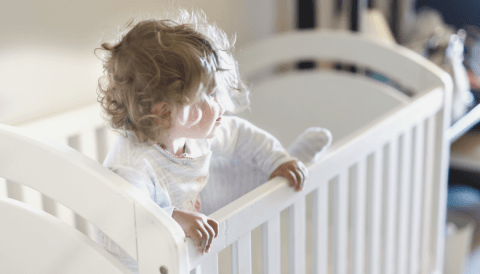Key Points
- Toddlers normally transition to a toddler bed between the age of 1.5 years and 3.5 years
- Climbing out of the cot is dangerous and is a good sign its time to upgrade to a toddler bed
- Toddler Beds can be skipped in favour of a more adult sized bed like a twin/single sized bed.
- Options exist to delay transition from the crib to bed if needed, but aren't without risks.
Before rushing off to splurge on the best Kids Bedding money can buy, you will undoubtedly be thinking 'when is the best time to make the switch from a crib (or Cot) to a Toddler Bed' or even contemplate jumping straight into the bigger Twin Bed (sometimes called Single).
We have created this guide to help better prepare you and your toddler to make the transition from crib to their bed.
What is a Toddler Bed
Toddler beds are not the same as a twin beds, the toddler bed mattress shares the same dimensions as the crib mattress and unlike a bed, they tend to have more safety features like side rails and sometimes even a change table.
The exact dimensions of a Toddler Bed vary, but at a minimum they will be 27 inches x 52 inches or 70 cm x 140 cm. Below is a chart showing the different sizes of the Crib, Toddler Bed and the Twin.
| Mattress | Dimension | |
|---|---|---|
| Imperial | Metric | |
| Crib | 27" x 52" | 70cm x 140cm |
| Toddler Bed | 27" x 52" | 70cm x 140cm |
| Twin (or Single) | 38" x 74" | 96cm x 188cm |
If you have limited floor space, the smaller size of the toddler bed is ideal as it helps you save space in your child's room that you can use as a play area.
If you're on a budget, toddler beds are also cheaper but do consider that you will need to upgrade to a bigger bed again in a few years so its more expensive in the long run.
Even though the crib mattress can fit in the Toddler Bed, re-using your crib mattress may not be the best as it can be good to start with a fresh mattress as toddler mattresses are typically softer than your old crib mattress, and your old crib mattress might be showing some wear and tear from its years of usage.
We don't recommend toddler beds for children beyond 5-6 years old as the Toddler Beds are smaller and toddlers will likely outgrow their toddler bed by this age.
Some parents skip the toddler bed and move their kids from a crib to a twin bed directly. Twin beds are bigger and have larger frames that offer more comfort to your child. If you're not at ease with the height from the floor, you can purchase and install side railings for peace of mind. You can also place some soft rugs or pillows on the sides of the bed as a cushion in case your child rolls off the bed.
Twin beds are also more expensive than a toddler bed. You would also need to spend extra money on new mattress and sheets as your old crib mattress will not fit on the bigger bed. Twin beds though can save you money in the long run, as you will no longer have to purchase another bed once your child gets too big for his toddler bed. You can also avoid another transition if your child gets too attached to his toddler bed.
When should we switch to a toddler bed?
When should we switch to a toddler bed? The typical age a toddler transitions to a toddler bed is between 1.5 and 3.5 years, but research indicates that despite only 12.6% of toddlers sleeping in a crib at age 3, it can lead to overall better sleep outcomes if the transition occurs closest to 3 years of age.
Don't rush to make the switch just because your child is within some toddler transition age range as there are other factors to consider and ultimately, the emotional needs off the child should come first.
If you move your child before he is ready, relaxing bedtime can quickly become a nightmare for you and your child and they may start throwing tantrums and insist to have their crib back.
Consistent with practice recommendations, deferring the crib-to-bed transition until age 3 years may benefit toddlers’ sleepSleep Medicine
If you move before all safety measures are in place, your child's new found freedom from the crib may turn them into explorers in their new bedroom and the rest of the house where they may identify dangers before you do.
Making sure the child is physically and emotionally ready for their transition and their environment is safe is essential to ensuring the switch to their new bed goes smoothly.
Toddler crib transition statistics
An age range does not really tell you a complete picture, its more important to understand what is more commonly for toddlers at different ages throughout this range.
Below is a table containing the age and the percentage of toddlers that are still in a crib at the respective age:
| Age | Percent |
|---|---|
| 24 Months | 63.4% |
| 30 Months | 34.3% |
| 36 Months | 12.6% |
How do you know when your toddler is ready for a bed?
Every child is going make the switch to a bed at an age that is appropriate for them, there are some signs that can help you decide if your child is ready.
Here are a few signs that can help you identify when your child is ready to make the switch to a bed:
Consistently climbs out of their crib
Climbing out of the crib is one of the stronger signs that you need to consider making the switch to a bigger bed.
Once your toddler has discovered their new found acrobatic feat, safety in the crib becomes most concerning.

According to WebMD nearly 10,000 children are taken to the emergency room each year from falling or being wedged in their cribs. With an estimated 2/3rds of those injuries being attributed to falls from the crib. These are quite high statistics.
Before jumping right in and making the switch to a bigger bed, ensure that the crib mattress is in the lowest position as this could by you a bit more time.
Also consider that if you child is approaching 90cm or 35 inches tall, the crib bars are only likely to reach up as far as their chest which will increase the chances of getting hurt if they attempt to crawl out from the crib and fall.
The increased danger associate with climbing out of the crib indicates at the very least that new safety measures will need to be considered even if you decide to delay the transition.
Less need for supervision
The need to tend to your child during the night will diminish over time, and if you have reached a point where your child is able to sleep through the night without needing to be resettled, it is a good sign.
If your child is waking up in the middle of the night needing comfort and they are able to freely wander from their bed, they might discover a stair case or other hidden danger as they navigate their way to find you.
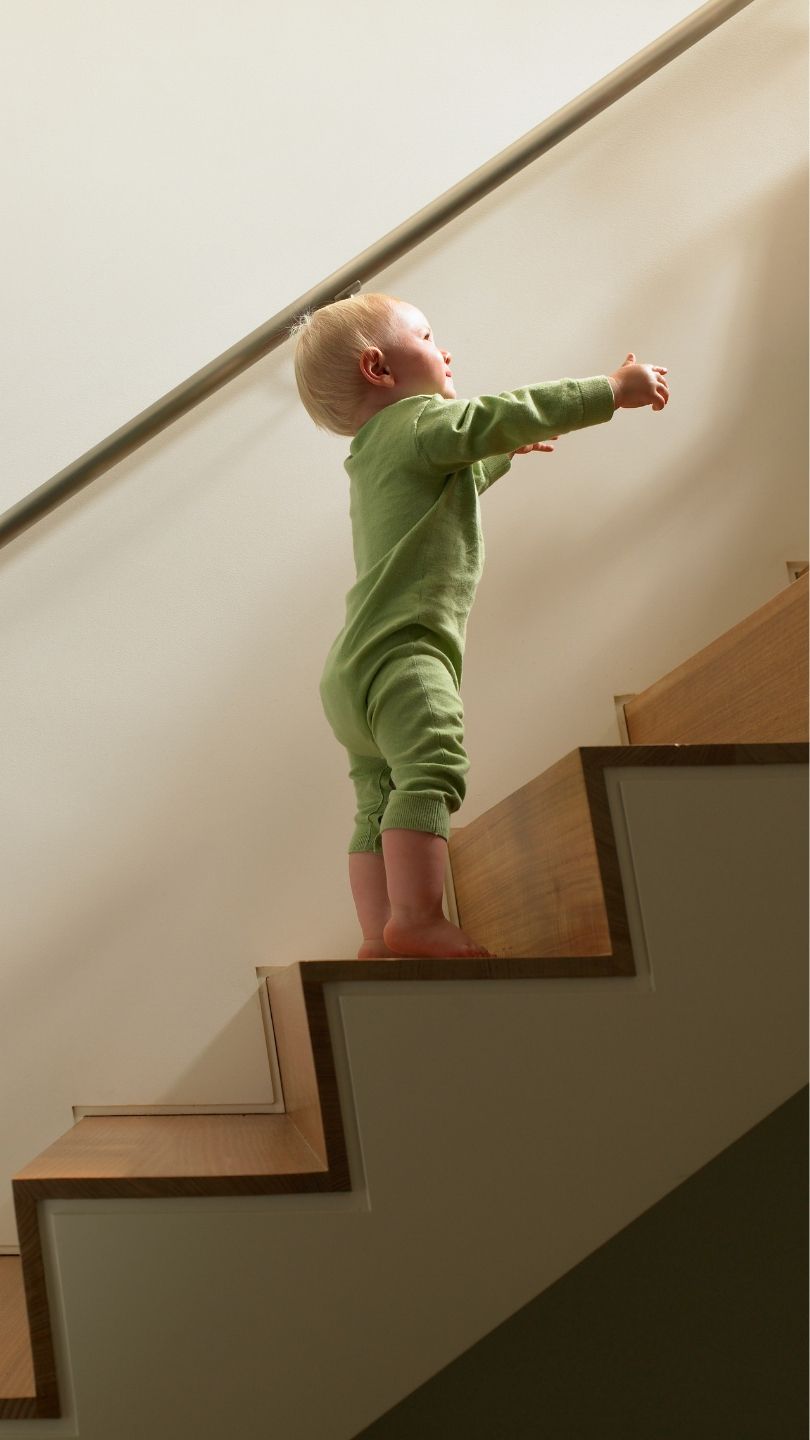
If your child will be moving into a new room for the first time, this could pose additional challenges as you have to introduce the concept of their new bedroom first. It may be a good idea to start playing in the new room during the day time first and having naps there initially if they are still having naps.
Once they are comfortable with the new space, the more settled they will be when sleeping there and will reduce the likelihood of them waking and wandering from their bed and tripping or hurting themselves.
Talking to your child about moving to their bed
Simply having a conversation with your child is a good way to gauge how they might feel about making the switch to a different bed. There is pretty good chance they will actually be excited about it.
Some children who are ready for their own "big kid" beds can be quite vocal and just ask for it and are quite excited about the move.
Delaying the transition to Toddler Bed
Just to reiterate on earlier points, if your toddler is able to climb out of the crib then danger exists the longer your toddler remains in their crib. There are good reasons, however, as to why you might need to delay the transition.
When your child is also undergoing other changes or transitions, like starting in daycare, or weaning or potty training, it may be prudent to delay the switch. Your child might feel too stressed or pressured because of so many changes are happening. Switching him now might do more harm than good.
If your child is not yet ready to move but the crib is proving to be too unsafe, we found some options that can help you. Please take note that some of these options aren't necessarily perfect and can have their own safety concerns
Sleep Sacks
A sleep sack is like a child's wearable sleeping bag. It's essentially a nightgown with a closed bottom. This is a good alternative to using a standard blanket as it ensures that something is always on your little one so they remain warm, but also provides an additional layer of safety in the crib.
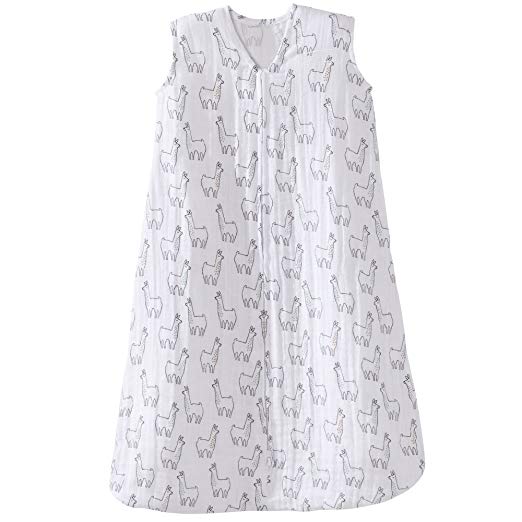
Sleep sacks can provide enough resistance to the movements of your child that it may prevent them from being able to crawl out of their cot.
Warning: Toddlers, however, are fast learners. If they figured out how to climb over the crib, they will most probably figure out how to get out of the sleep sack. Then you're back to facing the dangers of falling from the crib.
Crib Tent
A crib tent is a cover made of mesh, that you can attach over the crib to prevent your child from climbing out.
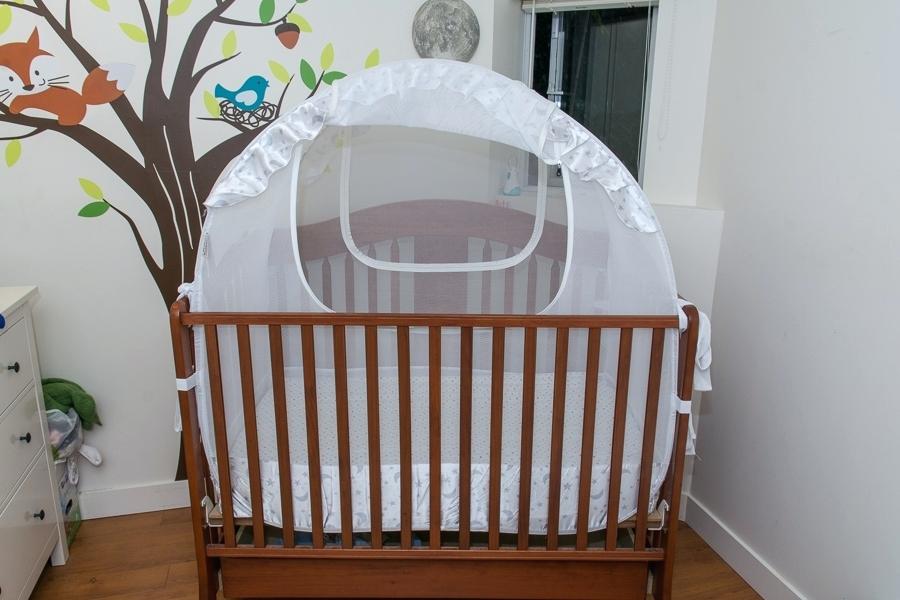
Crib tents can usually discourage your child from climbing out, but your clever toddler might still be able to find out how to unzip that tent and climb out.
There are also possible dangers when using a crib tent. In case of an emergency, some crib tents might hinder your ability to get to your child as you would need to unzip or remove the tent first to reach your toddler.
To minimize the danger, make sure that your crib tent is visible so you can see what your child is up to inside his tent. Get crib tents that are fireproof and breathable (avoid suffocation).
Mattress Only
Taking out the crib mattress and laying it on the floor is another way to thwart a crib's danger without switching. The mattress will feel familiar to your child, and they'll feel comfortable with it. The mattress is also very near to the floor, which means you don't have to worry about your child falling to the ground.
Using the crib mattress on the floor is a much a gentler way of easing the transition and can delay some costs. Once your child is at ease with the boundaries of his mattress, you can transfer the mattress to a toddler bed.
When you do upgrade to the bigger bed, try to make sure that the new bed will reside in the same spot as the mattress was to keep things consistent for them.
Preparing a Toddler for his new bed
A prepared and ready toddler would have an easy and smooth transition from his crib to his bed. The best way to prepare him is to talk to him. Be very clear about what is happening and remove all of his worries and fears about the switch.
If he is moving into a new bedroom, slowly and gradually introduce him to the new setup. Have him spend some play time in the new room. As he gets more familiar with the room, he'll start feeling comfortable in there. You can also use the room and bed for his afternoon naps then some evening winding down (cuddles, back rubs, bedtime stories) and move back to the crib for sleeping time. Once he's accustomed to using the bed, you can start having him sleep there.
Preparing the Bedroom for a Toddler
There are a lot of things to consider in moving your child to his very own room. This can easily become problematic when your child doesn't want to be left alone in his room, or he keeps coming back to your room.
Here are a few tips on what to consider in preparing the room.
Bedroom Safety
Making sure the bedroom is absolutely toddler proof is going to be the first thing to focus on.
Toddler beds have built in guard rails to protect your child from falling from his bed. If you are getting a twin bed, install some side rails as well for your child's safety. You can remove those rails once your child is used to his bed's boundaries.

Make sure that any power points or outlets are covered and can't be pried open by your toddler. Toddlers are very curious, and their tiny fingers are just the right size that can fit into those electric sockets. Avoid the danger of being electrocuted and ensure that those live power outlets have appropriate covers.
All cupboards and cabinets should be securely hooked to the walls. Your toddler might climb up or grab on those shelves and cupboards. Unsecured cabinets might fall on your child and cause severe injuries.
If you don't have one in your nursery before, it is time to invest in a good baby monitor. Baby monitors can help you keep track of what your child is doing in his room even if you are somewhere in the house.
Get a night-time light
A night time light can make your child feel more comfortable and make the room safer if they were to wake up and walk around.

There are many beautiful options for night time lights and it can be a great opportunity to involve your child in choosing one they like.
New or Second-hand items
If you're on a tight budget, you can save a bit of money by using second-hand items and even get better quality or safer items for much cheaper.
When using hand me downs though, make sure to thoroughly inspect them to ensure your child's safety. For example, if your child is receiving his older cousin's bed, double-check that it is sturdy, there are no loose screws or sharp edges that can cause accidents and injuries.
I would urge caution on second hand mattresses as there could be mold, bed bugs or other bacteria that may be lurking beneath the surface, even if it comes from a family member or trusted friend you can never be certain the danger still exists.
Keep Kids involved in the process as much as possible
Including your child in the planning and decorating of his room is a good way to raise the excitement levels. Get stickers for the room and choosing what goes where are all fun activities to do with your child, after all it will be their room.
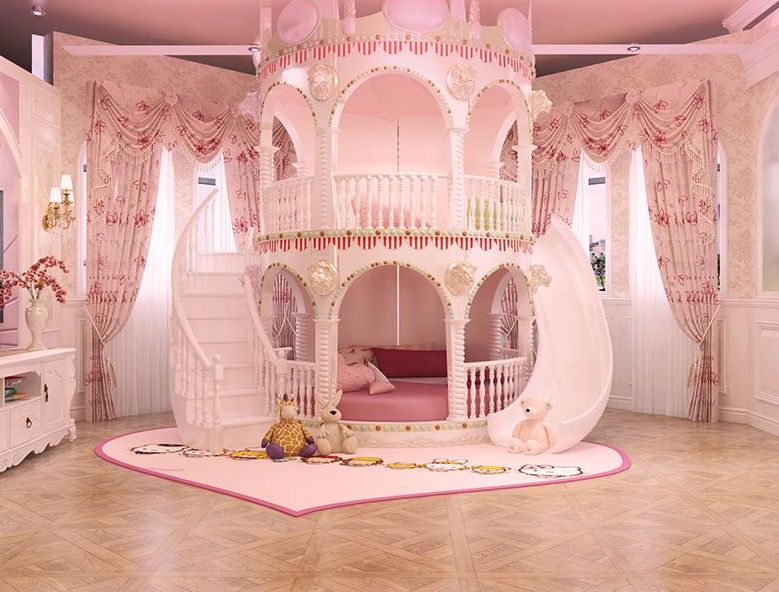
Be careful not to let your child have full creative control , as too much involvement might backfire. They may choose the biggest or the most offensive item in the store and be very disappointed with anything less.
It can be prudent to narrow the choices down to the ones you are happy with first then let them choose from your pre-approved list.
Familiarity
Familiarity will be particularly important if your child is moving into a new room for the first time. If he was previously sleeping in this room in his crib then this may not be such a problem.
Allow your child to move his most treasured possessions to his brand-new room. Move his favorite toys and stuffed animals to his new bed so it can give a sense of familiarity.
Start including the new room into his bedtime routine, maybe use it for story time before moving to his crib to sleep. When the new room feels familiar, the transition would be easy and stress-free for your child.
Choosing the right Bed and Mattress
A growing child needs a lot of good sleep so they can grow well. Picking the right bed and mattress for your child is crucial. Here are a few tips:
Find a toddler bed that sits low on the ground so your child can easily climb in and out of his bed. It should have a solid frame and a safe design. Check for the materials used in it and avoid those that used toxic paints and finishes.
Select a mattress that fits the bed frame perfectly. Choose one that is fire retardant. A firm mattress is also advisable so there is less risk of your child sinking in and suffocate. You should also consider the materials used for the mattress.
Natural vs. Non-natural materials
Mattresses can be made from coils, springs, wool, polyester, cotton and memory foam. Each type has its own benefits, but mattresses made with natural materials are the best choice for your child's bed.
Cotton vs. Polyester
Choose a mattress that is made of cotton rather than polyester, especially if your child has sensitive skin. Polyester is a man-made material and has a plastic-like quality. Cotton, on the other hand, has high breathability and is more comfortable to the skin.
Product Labels
Product labels can help you make more informed buying decisions especially when it involves small children that like to spend a lot of time sleeping in and playing around their beds.
If you want to ensure that the products you are buying is the safest for your child, then make sure you look for the Oeko-Tex product label to ensure that you are getting something that is free from anything harmful.
If you want to go the extra mile and know that what you are buying is safe for your kids but also environmentally friendly and sustainable look for the Global Organic Textile Standard.
The Global Organic Textile Standard (GOTS) represents the highest level of safety and best guarantee for lessening the impact on the environment and welfare of those involved in the entire Textile Supply chain. If you want to find out more about GOTS have a look at our article on reasons why you should choose GOTS certified kids bedding
Conclusion
Graduating from a crib and moving to a big-kid bed is a special milestone for your child. Avoid making it a stressful time for both you and the child by managing this transition as gently and smooth as possible.
Don't rush in making the switch. Remember that timing is crucial in this move. Rushing to move when your child is not yet ready might cause more problems than making him stay in his crib for a bit longer.
Prepare your child for the change and ensure that he is ready to transfer to his toddler bed. Talking to him and asking him about how he feels about moving is a great way to prepare him and to know if he's ready.
More importantly, always put your child's safety above all, when deciding when it is time to switch, what are the things you need for the move, and the transition process itself.
The perfect time to move from a crib to a toddler bed is really up to you and your child. Be patient and show him your support. Years later, this is one achievement that you would remember fondly.

